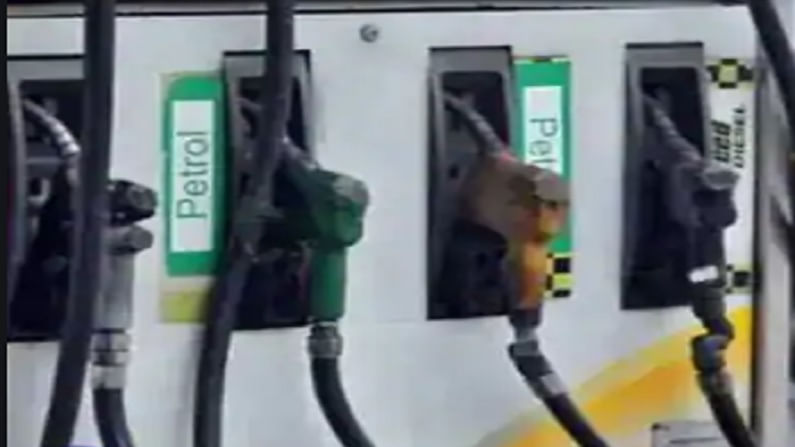Oil bonds should not be viewed as sole reason for high petrol and diesel prices
Practice of future consumers subsidising current ones may be iniquitous (if they are not the same) but is useful to make difficult reforms acceptable

While Manmohan Singh’s government moderated petro-fuel prices during its first term in office to ease the pain to consumers from an abnormal rise in international crude oil rates, and even suppressed them for ideological reasons, the current spike in retail prices cannot be attributed to the discharge of obligations on the oil bonds which it had issued. On April 16, Finance Minister Nirmala Sitharaman told a select group of journalists that the Modi government had paid Rs 70,196 crore in interest on the oil bonds which the previous government had issued and repaid Rs 3,500 crore in principal.
The contribution of indirect taxes on petro-products to the central government’s revenue in 2020-21 alone was Rs 4.19 lakh crore, according to PP&AC, a research agency of the petroleum ministry — a jump from Rs 2.88 lakh crore.
On a litre of petrol retailing for Rs 101.84 in Delhi, buyers pay 55% in taxes, of which 32 percentage points go to the central government. From diesel, retailing at Rs 89.87, the Centre takes away 35%. These rates are out of sync with global crude oil prices. The average rate per barrel in this financial year for a mix of crude oils that India uses is $69. At around this price in 2009-10, petrol was retailing within a range of Rs 45 and Rs 48 in Delhi. The price of diesel was between Rs 33 and Rs 38 a litre.
Manmohan Singh’s government had sold petro-fuels below cost as the price of the Indian mix of crude oils rose from $39 a barrel in 2004-05 to $112 in 2010-11. Briefly, it had touched in $132.5 in July, 2008. By December that year, prices had plunged to $36. By the end of the next year, they had doubled.
With retail prices suppressed, the amount not recovered from consumers amounted to Rs 3 trillion between 2003-04 and 2008-09. Oil and gas producers absorbed Rs 1.01 trillion. The oil marketing companies bore 0.56 trillion. The government issued oil bonds worth Rs 1.49 lakh crore for the rest of the subsidy.
Coalition compulsions
While the government could not have passed on the entire increase in crude oil prices out of concern for people and for its own survival in office, financial prudence would have required it to raise retail prices by more than it did.
But it was constrained by its ally, the CPI (M), led by the hardliner Prakash Karat, which preferred higher corporate taxation instead. Petroleum Minister Mani Shankar Aiyar was also of a similar bent of mind. Sonia Gandhi, the Chairperson of the ruling alliance, and her National Advisory Council, were other restraining influences. Even after Aiyar was replaced by the market-friendly Murli Deora in 2006, retail fuel prices did not budge much.
With the suppression of retail prices, there was no check on demand which grew in double-digits, adding to the country’s import bill. Oil and gas producers could not invest in exploration or acquisitions. The oil marketing companies were forced to borrow. As the bonds were not issued to private oil retailers like Reliance and Essar, they vacated the field of fuel marketing and took hits on their investment in retail outlets.
Grappling with deficits
The oil bonds helped prettify the fiscal deficit. In his February 2008 budget speech Finance Minister P. Chidambaram said: “I acknowledge that significant liabilities of the Government of oil, food and fertilizer bonds are currently below the line.” He justified this as being “consistent with past practice”. But consistency doesn’t make it virtuous. He admitted that “our fiscal and revenue deficits are understated to that extent”.
Finance Minister Pranab Mukherjee corrected the practice. In his 2010 budget speech, he said he had made a “conscious effort to avoid issuing bonds to oil and fertiliser companies” and would pay all subsidies in cash instead.
The government had also issued bonds to fertiliser companies and to the Food Corporation of India in lieu of cash subsidies. The prices of both food and fertilisers had been boosted by the jump in crude oil rates. Currently, fertiliser bonds worth Rs 15,705 crore and food bonds worth Rs 16,200 crore are outstanding.
The Modi government should not have had difficulty in repaying the bonds prematurely from petroleum tax revenues. Crude oil prices fell from $85 a barrel in 2014-15 to $45 last year.
Walking a tightrope
The practice of future consumers subsidising current ones may be iniquitous (if they are not the same) but is useful to make difficult reforms acceptable. Early in the last decade, the Sheila Dikshit government had given a loan of Rs 3,450 crore to the private distribution companies which had replaced the erstwhile government monopoly. Delhi had high transmission and distribution (T&D) losses. To recoup them, the private companies would have had to jack up power rates, putting the privatisation process in danger. The loan helped them bear the initial losses. It was to be repaid from revenues flowing in from the reduction of T&D losses. The losses were substantially reduced in subsequent years. The private companies, however, did not repay the loan.

